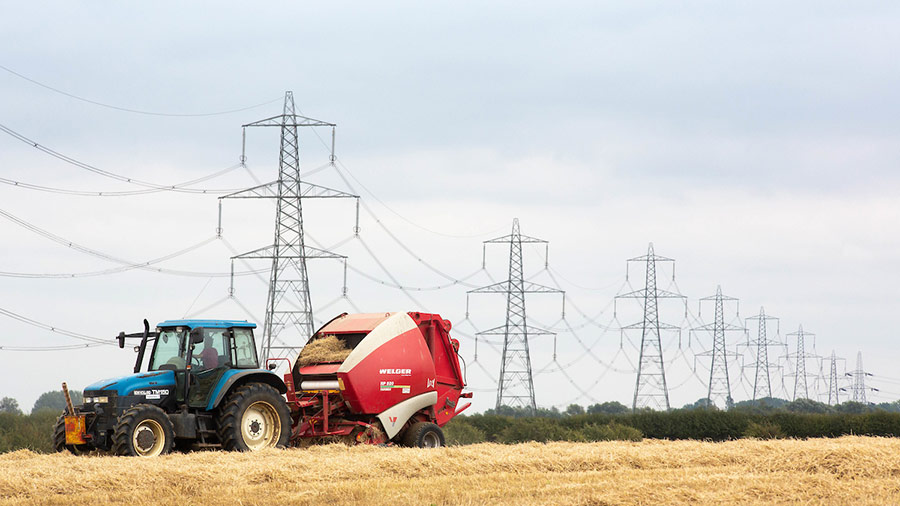Overhead power line height rules need safety update, say farmers
 © Tim Scrivener
© Tim Scrivener Out-of-date rules on overhead power lines are putting farm machinery operators at risk, say farmers.
Lines that have up to 32 kV of power must have a minimum ground clearance of at least 5.2m, and lines with up to 132 kV should be 6.7m or more from the ground.
Lines that have up to 400 kV must be at least 7m from the ground.
According to the Health and Safety Executive (HSE), on average two people a year are killed when they come into contact with overhead power lines during agricultural work.
See also: How to work safely near overhead power lines on farmland
Stafford Proctor, a mixed farmer based in south Lincolnshire, said he was very concerned that the legislation had not kept up with the size of modern machinery.
“The HSE guidance for safe working under power lines recommends that farmers do not enter a 3m exclusion zone near a 33,000 volt cable.
As the minimum height of these cables is 5.2m, any vehicle over 2.2m is not following health and safety guidance.
“This basically means any tractors built in the 1970s onwards that is over 2.2m tall is entering that 3m exclusion zone.
“Combines which are 5m with the lids closed and 5.2m with the unloading auger out are potentially touching cable heights that are the minimum legal standards of 5.2m.”
Potential hazard
The width of modern sprayers with extended booms is also a potential hazard not protected by the current rules on power line height, he added.
Merseyside grower Olly Harrison said: “Power lines are nowhere near high enough for modern machinery.
“If the HSE and power companies want to work around farmers, they need to update the guidance and infrastructure around working safely around power lines.”
Mr Harrison added that power companies were also not paying farmers adequately for the space their apparatus takes up in fields.
For Farm Safety Week (17-21 July), network operator Electricity North West released alarming statistics, showing that in the past 12 months, 38 separate safety incidents occurred on its power network on farms in the North West – and it is possible many more go unreported.
“Thankfully, despite all the incidents, there haven’t been any injuries, but it doesn’t reflect how serious each incident is,” said Alan Taylor, Electricity North West’s head of safety.
The NFU has raised concerns with the HSE over the minimum heights for overhead power lines and how modern machinery can be operated in a safe manner.
A HSE spokesman said: “We are aware of the NFU’s concerns. HSE produces extensive guidance about working safely in the vicinity of overhead powerlines (PDF) and would encourage farmers to engage with the distribution network operators to discuss options and suitable controls.”
Key advice for safe working around overhead power lines
- Plan ahead: carefully plan your routes, including access points, and don’t stack or store items directly under overhead lines
- Map it out: mark up a farm map with routes, operating voltages and approximate heights of overhead power lines running across your land, near boundaries and access routes to fields
- Tell others about potential hazards: Ensure that you inform staff, contractors, and delivery drivers of potential electrical hazards on the farmland before any work begins
- If your machinery is in contact with an overhead power line, or within 5m of a grounded line, stay inside your vehicle until the emergency services or SP Energy Networks arrive unless there’s a real threat of fire
- Have the national electrical emergency helpline number (105) close to hand. If anyone is injured, call 999 for medical attention
- If you need to get out of a cab, to call for help or because of fire, do not climb out as usual – jump out as far as possible, landing with both feet together
(Source: SP Energy Networks, NFU)
